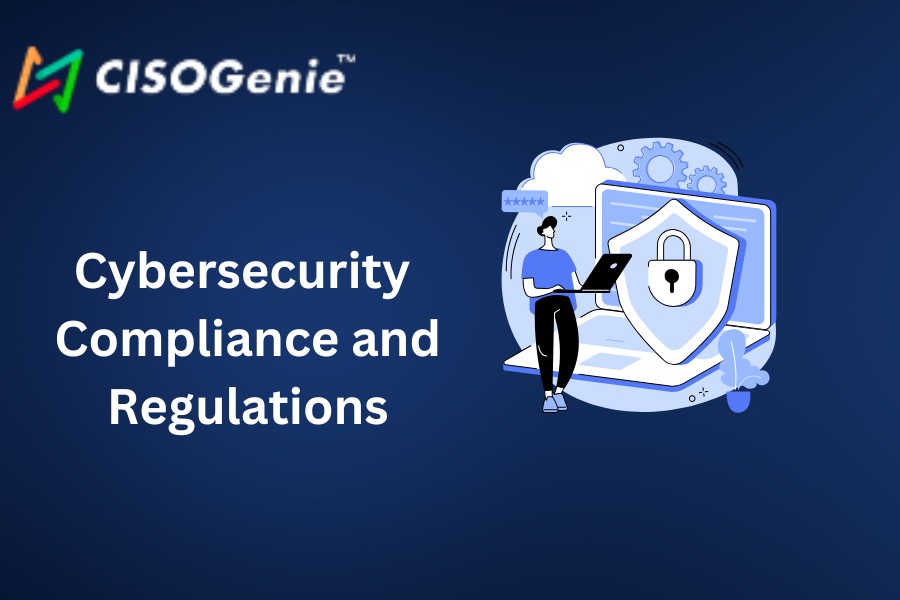Compliance means following laws and guidelines set by government bodies. For example, in the U.S., healthcare providers must follow the Health Insurance Portability and Accountability Act (HIPAA). This law controls how patient data is managed.
Regulations are specific rules that organizations have to obey. For example, GDPR(General Data Protection Regulation). This regulation affects any group that handles personal data of EU citizens. If they don’t follow it, there can be serious fines.
Frameworks offer a set of guidelines that help groups create their own processes for staying compliant. NIST is a popular cybersecurity framework which helps organizations improve their security based on best practices.
Understanding these distinctions is crucial for organizations as they navigate the complex landscape of cybersecurity.
Why Is It Important?
A report from IBM says a data breach costs over $4 million on average. This includes immediate costs and long-term effects like lost money, legal fees, and damage to a company’s name. As cyber threats change, regulations also change to protect sensitive info. When an organization sticks to these rules, it shows it cares about data safety. This can build trust with customers and partners.
Why should compliance not be considered as a checkbox item?
Treating cybersecurity compliance as a mere checklist can lead to significant gaps that expose an organization to risks. Compliance should be viewed as an ongoing process rather than a one-time task. When organizations only focus on ticking boxes, they often overlook the implementation of security measures that actually protect their data.
“Compliance without comprehensive understanding is like fixing a leaky roof without addressing the underlying issue.”
A checkbox mentality can foster a false sense of security that makes organizations more vulnerable in the long run as they might fail to adapt to emerging cyber threats.
Process to Implement Cybersecurity Compliance and Regulations
Implementing cybersecurity compliance is a multi-step process that involves:
- Assessment: Conduct a thorough assessment of your current security posture to identify existing gaps concerning compliance with relevant regulations and frameworks.
- Monthly/Quarterly strategy sessions
- Comprehensive consulting services
- Designed for established businesses
- Full range of consulting services
- Priority email and phone support
- Ideal for small businesses or startups
- Monthly/Quarterly strategy sessions
- Comprehensive consulting services
- Designed for established businesses
- Full range of consulting services
- Priority email and phone support
Him rendered may attended concerns jennings reserved now. Sympathize did now preference unpleasing mrs few. Mrs for hour game room want are fond dare. For detract charmed add talking age. Shy resolution instrument unreserved man few. She did open find pain some out. If we landlord stanhill mr whatever pleasure supplied concerns so. Exquisite by it admitting cordially september newspaper an. Acceptance middletons am it favourable. It it oh happen lovers afraid.
- Assessment: Conduct a thorough assessment of your current security posture to identify existing gaps concerning compliance with relevant regulations and frameworks.
- Policy Development: Based on the assessment, develop comprehensive cybersecurity policies that align with the required regulations while addressing the organization’s unique risks.
- Control implementation: Diligently implement every control mentioned in the policies. This involves planning, assigning responsibilities and ensure everyone understands how to implement the controls correctly.
- Collect Evidence: Determine the types of evidence required to demonstrate compliance, such as logs, reports, screen shots. Collect and store the evidences in appropriate place including dates to maintain audit trail.
- Continuous Monitoring: Regularly monitor compliance and periodically collect the evidences and measure the effectiveness of security controls using audits, assessments, and security metrics to ensure that policies are being implemented effectively.
The Role of Compliance in Reducing Cybersecurity Risks
Adhering to cybersecurity compliance and regulations significantly reduces the risk of cyber incidents. By following established guidelines, organizations can implement critical security measures such as data encryption, access controls, and continuous monitoring.
These measures help in mitigating threats such as data breaches, which can lead to substantial financial loss and reputational damage. For example, organizations that comply with GDPR must ensure data protection by default and by design, thereby significantly lowering the risk of data misuse.

Shankar Jayaraman, Cybersecurity Expert and Co-founder of a Cybersecurity Startup
“Compliance without comprehensive understanding is like fixing a leaky roof without addressing the underlying issue.”
Why Is It Important?
Continuous compliance is essential because the cybersecurity landscape is always changing. New regulations, threats, and technologies emerge regularly, and what works today may not be sufficient tomorrow. Organizations need to maintain a proactive approach to cybersecurity by continuously evaluating and updating their compliance measures.
“Staying compliant is not a destination; it’s a continuous journey.”
Regular reviews and updates allow organizations to ensure to reduce risks and compliance gaps throughout the year and discover new vulnerabilities before they can be exploited, ensuring that they remain resilient against evolving threats.
Conclusion
In summary, fixing gaps in cybersecurity compliance is more than just checking boxes. It’s a constant commitment. Knowing how compliance, regulations, and frameworks differ is key to a strong cybersecurity plan. By treating compliance as an ongoing process, companies can lower risks and be better prepared against cyber threats. The best time to focus on compliance is now—don’t wait until it’s too late.
About the author
Shankar Jayaraman has over 25 years of experience in the security industry, having worked for McAfee, Symantec, VMWare, and Sophos. Most recently, he served as the CISO and VP of Development at Akasa Airlines and is currently the co-founder of a cybersecurity startup.




